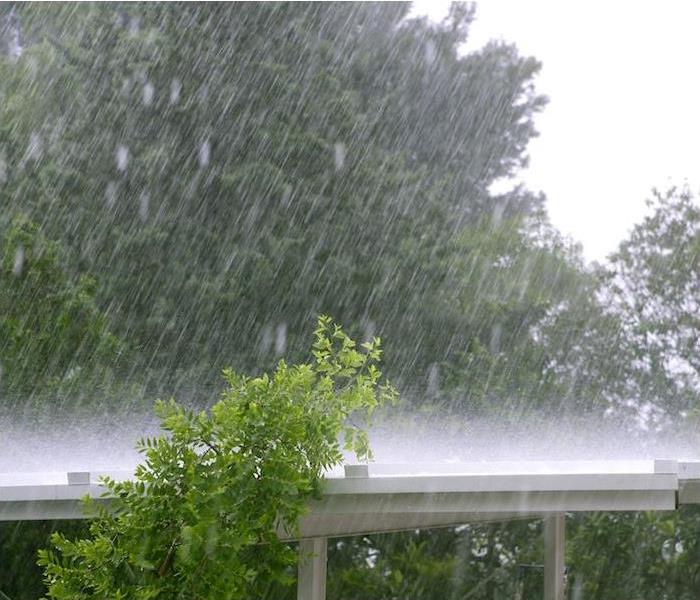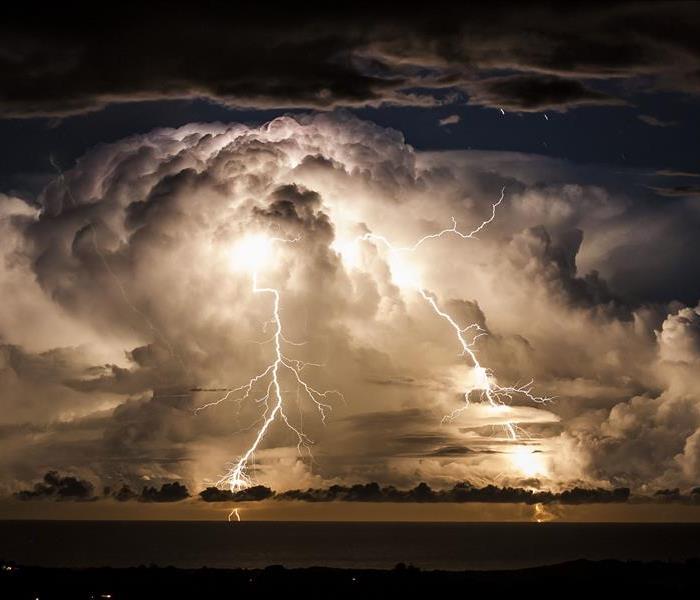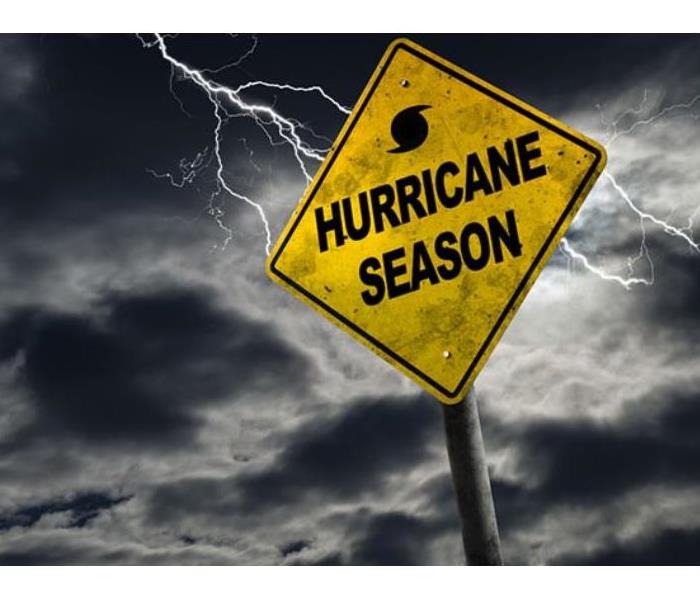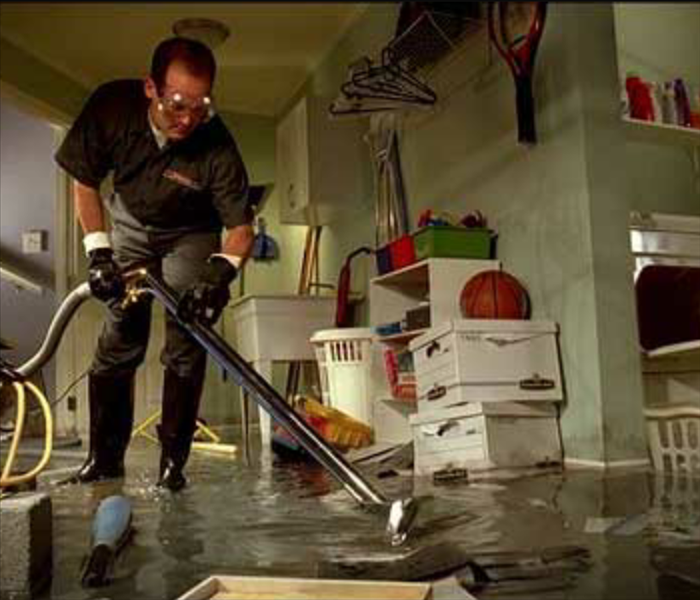Archived Storm Damage Blog Posts
Preparing for Spring Storms | SERVPRO® of McAllen
4/1/2024 (Permalink)
The warm weather of spring has arrived, and we know for our Texas home that means that plenty of rain and severe storms can come right along with it. It isn’t uncommon to see thunderstorms, flash flooding and even the occasional early season tropical-style storm during the spring months.
As spring pushes toward summer, the weather can intensify and the official hurricane season starts. With potentially volatile weather headed our way, it is important to be prepared.
All the preparations in the world won’t matter if you don’t have a way to receive weather alerts. Staying informed is one of the most important things you can do in order to safely ride out anything Mother Nature brings.
The Power of the Internet
Your phone is likely never very far away from your hand, which makes it one of the best choices for staying connected to weather forecasts and alerts. There are Wireless Emergency Alerts that can be sent directly to your phone, but you should also consider signing up for another reliable weather app in order to have the most information possible.
When you are choosing an app, make sure you are sticking with a nationally recognized organization. Seek out your nearest news station, since many of them offer apps that will keep informed on a multitude of situations. Make sure you sign up for alerts from the city as well.
Keep an eye on local weather forecasts when an event is predicted so that you are not caught off-guard if an alert is issued. This can also help you decide on any upcoming travel plans you may have and keep you up to date on shelters and evacuation orders.
Non-Electronic Options
While our phones and other screens are great resources for staying well-informed, they also have batteries that will eventually run out. Make sure you have a way to continue receiving weather alerts and other news even if the power goes out long-term.
If there are weather sirens close enough to your home to hear, get to know the different sounds they make ahead of a storm coming in. Invest in an NOAA weather radio as well. These are portable, require no electricity and can give you accurate information through any kind of severe weather. Keep one handy even after a storm has moved through in case another system is close behind it.
Emergency alerts can save your life by getting you out of harm’s way, but that doesn’t mean your home won’t see some damage when storms get bad. If it does, call us day or night and start restoration immediately. We are local, which means we are ready to go the moment you need us.
Serious storms can cause serious property damage. Call SERVPRO® 24⁄7 for immediate restoration assistance.
The Ways Storms Create Damage
11/2/2022 (Permalink)
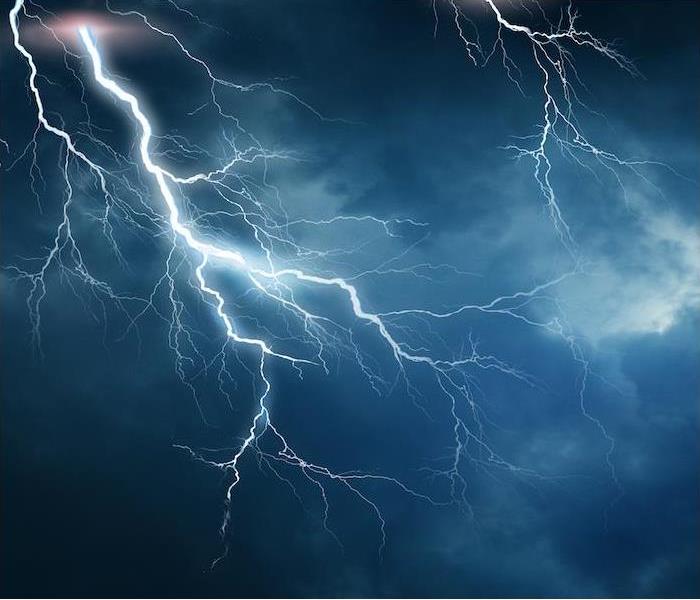 The Ways Storms Create Damage | SERVPRO® of McAllen
The Ways Storms Create Damage | SERVPRO® of McAllen
Severe storms can ruin anyone’s night. When you own a home, not only do you worry about the safety of your loved ones, you also wonder how your property will fare.
Most modern homes are built to withstand a good deal these days, but sometimes a wild storm will still leave behind a wake of destruction when it blows through.
Thunderstorms can bring heavy winds, lightning and hail, snowstorms can carry freezing rains, and flash floods can happen year-round. No matter the season, there is always the potential for your property to end up damaged and the structure of your home to be threatened.
While sometimes what happens in a severe weather event comes down to just plain old luck, there are a few factors to consider when looking at your risks. The type of storm moving in, the general geography of your location, the landscaping around your house and even the construction materials your home is built with will all play a role in the damages you may receive.
Our Texas weather may be a nice treat to anyone who doesn’t like the cold, but living in this area comes with the threat of strong thunderstorms, hurricane activity and tornadoes. While we all know extra prep is required in order to ride out hurricane season safely, we should be ready for severe weather throughout the year in order to best protect ourselves and our property.
When storms do roll in, if your home is damaged, be sure that a professional has declared it safe to live in. You may not think the damage you can see is that drastic, but structural damage is not always immediately visible. Always heed evacuation orders and wait to return home until you know you can safely get there.
And learn as much as you can about common types of storm damage so that you know what to do to prepare for them:
Wind
Wind becomes destructive when it reaches top speeds. Tornadoes and hurricanes will always have a threat of strong winds even for those not in the immediate path, but even a thunderstorm can blow damaging gusts of up to 100 mph.
When winds reach those kinds of speeds, they can blow small objects into vehicles and buildings. If you are sheltering at home during a storm with high winds, make sure you stay in an interior room away from walls that can be pierced or windows that can be broken by flying objects.
You can take preventive action before a storm arrives to protect your home. Clear your property of any loose limbs, rocks or other small items that could become projectiles. Remove trees if they are dying before they can be knocked over. If you have furniture outside, tether it down so it stays put during a storm.
Water
Water damage is something we are very familiar with here, but it is also extremely common just about everywhere in the United States. Even a typical thunderstorm blowing through can dump enormous amounts of rain that can saturate soil and lead to water seeping in through doors or window seals.
If the ground takes on enough water or a flooding situation occurs, it can seep through your foundation and create structural damage from underneath your home.
With specific landscaping, you can help limit the amount of damage water can cause to your property. Create slopes that allow water to flow away from your home, and consider adding a rain garden. These are not only beautiful but are also highly effective at absorbing water before it can reach your home.
Your gutters are another important part of mitigating water damage to your property. Keep them cleaned and maintained to avoid water pooling on your roof, which can lead to leaks that damage your home from the top down.
Impact
“Impact damage” occurs when an object crashes into another object during a storm. This kind of damage can be catastrophic to your home as it typically involves fallen trees or wind blown debris. Impact damage can be caused by anything that can be picked up in the wind and makes an impact with your house or property.
This kind of damage can be avoided by trimming your trees, removing unhealthy trees from your property and limiting debris around your home.
In 2021, severe weather led to more that $145 billion in damages all around the United States. When you prepare your property, you can lower your overall risk factor, which will keep your home safe and save you money.
If your home is damaged in a storm, call SERVPRO of East Brownsville & South Padre Island. Our professionals are available 24⁄7 with the experience and equipment to get your restoration started and completed faster. Call us with any disaster you face, any time.
When you suffer storm-related damage to your home or business, it’s important that you know who to call! Contact us today to get your storm damage restoration started faster.
Do You Have a Plan for When Weather Turns Severe?
7/4/2022 (Permalink)
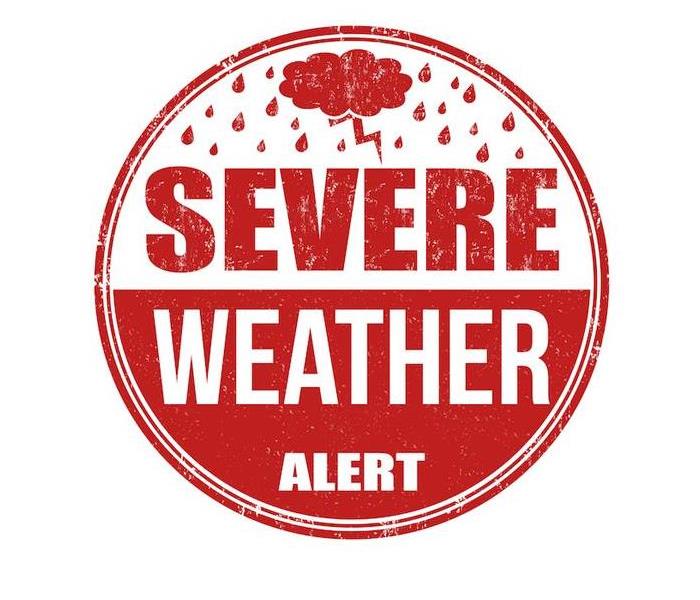 Have Storm or Flood Damage?
Call Us Today (956) 631-0348
Have Storm or Flood Damage?
Call Us Today (956) 631-0348
Bad weather can be very scary. Thunderstorms can bring lightning, heavy rain, hail, and strong winds. Every year, the United States sees nearly 100,000 thunderstorms, making this frequently occurring event common in all climates.
Our Texas climate is certainly favorable for severe weather. Along with thunderstorms, we have experienced flooding, hail, and hurricanes. Our typically warm weather and short winters mean that our storm season tends to be longer than most.
While we all step up our level of weather awareness during hurricane season, a year-round emergency plan is the best way to minimize potential storm damage and ensure our loved ones' safety.
Your Severe Weather Communication Strategy
When bad weather comes, communication needs to be the first step in your weather plan. This means it is essential to understand the difference between a watch and a warning so that you can move your family to safety at the appropriate time.
You should also have several ways to get weather alerts from trusted local officials. Your cell phone and a weather radio are two good tools to charge and activate long before the storm rolls in.
Your family needs a communication strategy that even includes what to do if someone isn’t home so that all can be marked safe during the event. Everyone in your house should know where designated safe spaces are in your home as well, so even the youngest folks can seek shelter as needed.
Your Severe Weather Emergency Kit
In your designated safe space, you should store an emergency kit with essentials for each of your family members. Enough food, water, flashlights, and batteries, along with first-aid essentials and comfort items, should be packed into this kit to sustain your family for up to 72 hours in the event that you need shelter in place.
Be sure to include items that will help you all stay calm as the storm rages.
Final Checklist during storm
1/6/2022 (Permalink)
Living in the valley for plus 25 years has taught me 2 things: we’re always at risk of hurricanes due to the Gulf of Mexico and we have the best tacos. Let’s focus more on the first, hurricane readiness.
Actions to take when a storm is in the Gulf of Mexico:
- Stay on top of the news on tv, radio, or NOAA weather radio for updates on the storms progress- Make sure you double check all your items in your emergency kit- Assure your vehicle has gas and is up to date on its service- If residing in mobile home, inspect and secure mobile home tie-downs- Board up windows (if shutters do not exist), in the event the storm moves quicker than anticipated with high winds or you have to evacuate- TAPE PROVIDES NO PROTECTION WHEN BOARDING UP - Store your outside furniture or light weight objects like garbage cans and trampolines that are prone to flying away due to high winds- Garage or store away any vehicles not in use- If your local city is providing instructions on evacuation follow their directive as provided
Final actions to take if EVACUATING:
- Turn off (if any) propane tanks- Unplug small appliances- Empty out your refrigerator and freezer- Turn off utilities (if ordered to do so)- Lock up you home securely- Take PETS with you.
Final actions to take if STAYING:
- Close shutters (if any)- Notify a family member or family friend of your evacuation plan- If you have a pool, lower the water lever to about a foot- If in an apartment complex follow instructions from emergency managers and be prepared to turn off facilities if instructed to do so- Board up remaining doors, windows, brace garage door and stay inside- Stay away from boarded up doors and windows- Take refugee in a room with no windows like a restroom closet, or hallway- If you need to call 911 know that during a landfalling hurricane assistance may take longer than usual to get to you.
If after the storm you suffer from internal structure damages to your building or home call SERVPRO. We can handle the insurance claim, clean-up and restoration process leaving it look, “Like it never even happened.” We stand by your side as storm experts and local owners we understand the stress that comes when dealing with flood/storm loses. We are here to help. Call for more information on our available storm services for you at 956-631-0348
Did you know?
1/6/2022 (Permalink)
Do you or anyone you know need some form of assistance during times of an emergency/disaster event?
DID YOU KNOW the state of Texas offers Texans the option to register with the STEAR program, a FREE registry that will provide local emergency planners and responders with additional information on the needs in their community?
Note: the Texas communities use the registry information in different ways. Registering yourself or your loved one DOES NOT guarantee that you will receive a specific service during an emergency.
Services vary per community, if you would like more specific information on the STEAR program, contact your local emergency management office.
Who CAN register?
- People with disabilities- People with access and functional needs as:o People with limited mobilityo People who had communication barrierso People who require personal careo People who require additional medical assistance during an emergency evento People who require transportation during an emergencyHow can I register?
- HTTPS:// STEAR.tdem.texas.giv- Dial 2-1-1 or use your video phone to relay option of choice to contact 211- Printed or electronic forms (contact your local government)What is required to register>
- Name- Address- Phone number- Primary LanguageQuestions you will be asked additionally to obtain vital information for local emergency planners and responders
- Emergency contact- Caregivers’ information- Pets- Transportation assistance for home evacuation- Communication barriers- Disability, Functional or medical needsNOTE: information provided will be kept COMPLETELY CONFIDENTIAL
Stay safe this coming winter
11/5/2021 (Permalink)
It’s fall,, The leaves are changing color and falling as is the temperature! Although we may not experience much cold in the valley, we sure did learn our lesson with the last free we had! Lesson being we can never be too overly prepared.
Heres how:
- have a ready kit including some of the following:
~ batteries
~ medicines
~ important phone numbers
~ flashlights
~ candles
~ matches
- scope out the home before a storm and look for any rook/window cracks that could lead to leaks or other severe damages
- trim any branches that could lead to accidents during a storm with high winds
- fill up your primary vehicles gas tank
- have a spare gas can as a back up
- carry cash with you in the event of a black out
Stay safe this coming fall! From your local SERVPRO of McAllen!!
Preparing your home for a winter storm
11/2/2021 (Permalink)
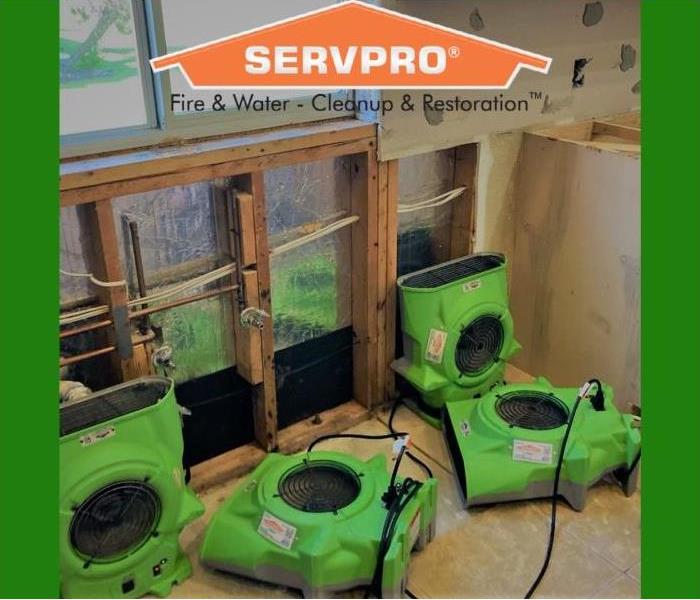 When you have a cleaning or restoration need, we’re already nearby and ready to help. 956-747-3020
When you have a cleaning or restoration need, we’re already nearby and ready to help. 956-747-3020
In the event your home suffers any damages due to a winter storm, call the 24/7 company that can assist you no matter the time or temperature. The storm gets clearer after, when you call SERVPRO, that you can be assured of.
We will take all precautions necessary from sending out crews to the site to handling the actual insurance 1x1 claim process. We promise, you will see a rainbow after the storm when we take your home into our hands and provide it back to you, “Like it never even happened.” (And that’s just the best feeling isn’t it?)
Although we stand by your side in the event of any disasters striking your home, I’m sure you’re asking yourself “what can I do to PREPARE my HOME before a WINTER STORM hits?”
Here are a few tips you can take into mind to be one step ahead of the storm:
- More insulation in your attic
- Seal off any leaky windows/doors
- Clean up any rain gutter
- Protect water pipes
As a trusted leader in the restoration industry, SERVPRO has over 1,700 Franchises in the U.S. and Canada that are ready to help.
SERVPRO of East Brownsville & South Padre Island professionals have the advanced training and equipment needed to clean or restore your home. We also have the resources to respond faster to any size of the disaster
5 easy ways to be prepared for storm season!
7/5/2021 (Permalink)
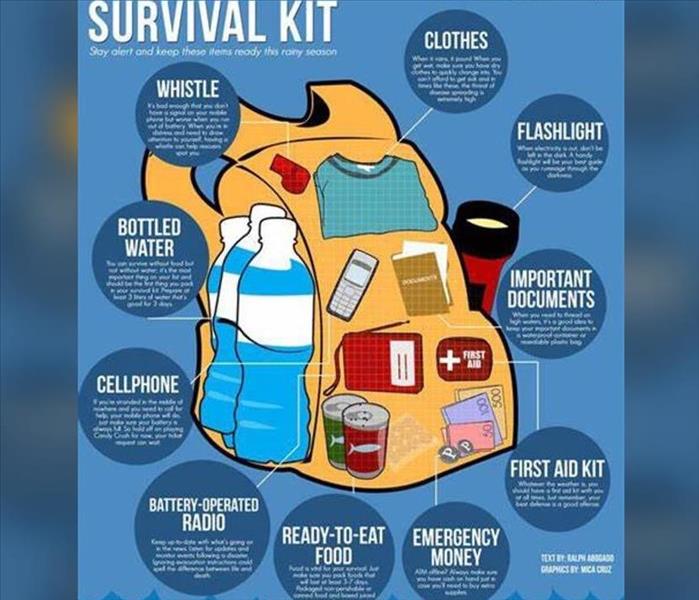 If your home suffers any damage due to a catastrophic event don’t hesitate in calling SERVPRO McAllen for a free quote at, (956) 631-0348!
If your home suffers any damage due to a catastrophic event don’t hesitate in calling SERVPRO McAllen for a free quote at, (956) 631-0348!
We may not experience many hurricanes or tropical storms, but we want to have all the necessary tools to be prepared for such scenario, when we do. And hey, sometimes, storms don’t have to mean hurricanes or tornado watches!! Constant rain, after a long period of time, may lead to floods or damage to your home, if it wasn’t ready for such impact.
Let’s jump right into the good stuff on, “How to Prepare Your Home for Storm Season”!
- Trim your trees: one of the most common ways a house suffers from damage is from fallen tree branches and/or limbs. While it may seem impossible to know which tree mother nature which choose to knock off her path, inspect those trees around your property and trim any necessary branches.
- Clean out gutters and check your roof: When your gutters aren’t cleared out regularly, you’re taking the risk that rain water will be backed up and end up pouring through the sides of the house, or even make its way to your roof line. Clearing out this task before a storm, might just save you damages and money beyond compare.
- Emergency kit ready: these can literally be a life saver if, in the event, you lose power during a storm.
Check list of items you may want to keep in your kit:
- Battery operated flashlights/headlights
- Candles/matches
- Battery operated radio
- Emergency cash
- First aid kit (from Band-Aids, pain killers, alcohol to gauze) be prepared
- Medications (for this scenario if you’re taking any daily crucial medications consider storing some in your kit just remember expiration wise when u stored them in the even u don’t use them you will need to swap them for a recent up to date dose)
- 3-day supply of food and water (same for food with shelf life, check the dates on your cans to assure if not used within their time frame they are replaced)
- Batteries
- Generator: this might just be your best investment in the event you live in an area prone to storms.
- Evacuation Plan: worst case scenarios can happen and you may be asked to evacuate your home. Familiarize your self w the different evacuation routes in your city. Also, keep close to you a list of family members and numbers where you may seek shelter. (Maybe having a listing nearby hotels in the event family isn’t an option for whatever reason)
Prevent the storm damage! BE PREPARED and sign up for weather alerts TODAY!
7/2/2021 (Permalink)
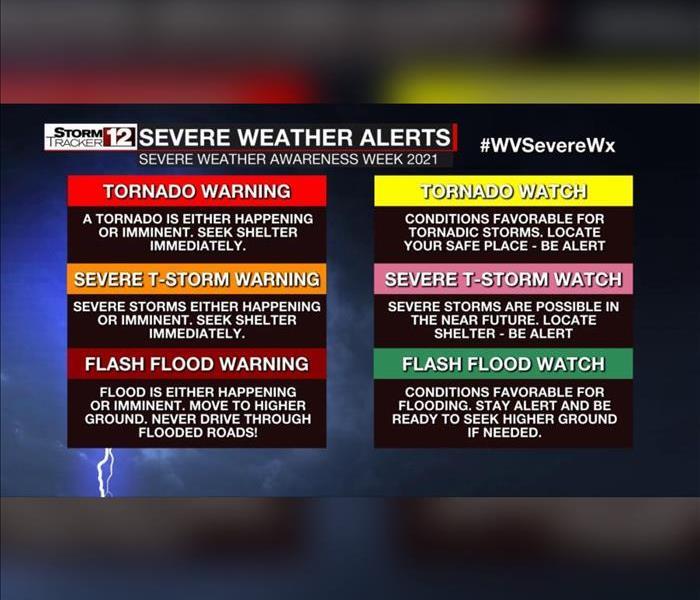 in the event of a catastrophic event, call SERVPRO McAllen! we open 24/7 allowing us to take your call at any time of the day !!
in the event of a catastrophic event, call SERVPRO McAllen! we open 24/7 allowing us to take your call at any time of the day !!
Sign up for weather alerts TODAY!
We have been having more and more storms through out this summer, in the valley, and with that being said we always want to be prepared and safe. Let’s dive right into the good stuff, these following weather alerts can be the difference between being stuck in a thunderstorm, for example while driving, as per getting to safety with enough time.
Here are 6 weather alerts you might want to check out
Commercial Mobile Alerts(CMAS) or Wireless Emergency Alerts (WEA) is the simplest way for you to register for local weather text alerts. These alerts are sent by the national weather service. Go to your mobile phone’s SMS setting and simply search WEA or CMAS. You can also register by dialing ##2677## NOTE: Your phone must be enabled to be able to receive these alerts.
Emergency Broadcasts are by default enabled on all new android phones. If you think that the alerts aren’t enabled, simply go to your
Settings > Emergency Alerts.
Here you’ll be able to see all kinds of different alerts and you can decide to turn specific ones depending on your region or situation.
Emergency Mass Notification System is a great way to enroll with your EMPLOYER who uses a multi channer emergency mass notification system such as RedFlag. This business software will allow a company to send emergency/crisis alerts and internal notifications to employees, vendors, and stakeholders whenever there’s a weather-related emergency in your region via text, email. Social, voice or any other communication channel.
The weather channel app is also one of the easiest ways for you to stay up to date with your region. With your location being inputted in the app no matter where you go, feel safe as the weather channel updates you on any warnings. Apart from severe weather warnings, it even sends out alerts for less-severe weather i.e fog and freeze. You may also get alerts about nearby lightning strikes, which can help you decide whether to stay outdoors or indoors.
weatherUSA Alerts sends out alerts whenever these alerts are sent from a federal agency including the national weather service. They sent out real time alerts whenever there’s a weather-related warning in your area. You can choose to receive these alerts via SMS or email, and also add your county. They also provide a “quiet time” option silencing all and any alerts. NOTE: premium memberships have the option to receive voice call alerts on your phon
Weather Radio is one of the best apps out there for receiving alerts on your phone. This app will read your alert out loud to you. This can come in handy if you spend yourself on the road a lot. You can also select what alerts you want to receive. NOTE: this app requires a subscription fee of $4.99 and additional lightning strike data can also be added for a yearly fee of 4.99
Restoring Your Commercial or Residential Property
1/7/2021 (Permalink)
Flooding and water damage events in commercial properties are often complex with numerous issues that require a knowledgeable and flexible response. Whether we’re dealing with a relatively small water cleanup scenario or a large scale event, we work quickly to assess each unique situation and isolate the damaged area. In many instances, normal operations can continue in a temporary space while we restore your facility.
Restoring Commercial Properties Presents Unique Challenges
Our professionals are trained to be mindful of legal and environmental concerns and strive to fully restore the damaged area while working within your budgetary constraints. We understand that every hour spent cleaning up is an hour of lost revenue and productivity. So when an emergency situation arises in your business, give us a call and we’ll be there fast with the help you need.
About SERVPRO Of McAllen
SERVPRO of McAllen specializes in the cleanup and restoration of commercial and residential property after a water damage event. Our staff is highly trained in property damage restoration. From initial and ongoing training at SERVPRO’s corporate training facility to regular IICRC-industry certification, rest assured our staff is equipped with the knowledge to restore your property.
Be Prepared When a Storm Hits Your Property
1/7/2021 (Permalink)
Sever Weather can happen at any time, anywhere. Being prepared to act quickly is very important when it comes to staying safe during a weather event. Below are tips to help you be prepared for a storm.
Know Your Risk
- The first step to becoming weather-ready is to understand the type of hazardous weather that can affect where you live and work, and how the weather could impact you, your business an your family. Check the weather forecast regularly, obtain a NOAA Weather Radio, and learn about Wireless Emergency Alerts. Severe weather comes in many forms and your shelter plan should include all types of local hazards.
Take Action
- Take the Next step in sever weather preparedness by creating a communications plan for your home and business. Put together or purchase an emergency kit. Keep important papers and valuables in a safe place.
Be an Example
- once you have taken action to prepare for severe weather, share your story with co-workers and family and friends on Facebook or Twitter. Your preparedness story will inspire others to do the same
Your Storm Cleaning and Disaster Recovery Experts
11/6/2020 (Permalink)
Summer is a time to make boatloads of memories from evenings grilling out on your deck. The incredible investment you’ve made in your property has created an emotional tie to it and protecting it as well as the memories created are important. Nevertheless, being aware of the potential harm that can come to your property are thoughts best kept in mind also. A possible threat to your property is a hurricane which can cause crippling damage.
Hurricane season began in June and it’s critical homeowners prepare for the storms that may impact their area. Whether it’s a property you own or a second home out on the Coast it’s paramount you do all you can to safeguard the integrity of the structure. Hurricanes, tropical storms, and tropical depressions may bring strong winds, inches upon inches of rain, and possibly tornadoes which can all spell disaster for your property.
When the Storm Hits, just know SERVPRO of McAllen will travel miles to make sure we get your home back to normal. We go into action as a storm clean and disaster recovery crew. We’re experienced in this arena not only from these two hurricanes but storms and tornadoes that have impacted the RGV previously. We’re equipped and available to respond to your disaster situation when it happens.
How to avoid flooding during a storm
10/21/2020 (Permalink)
While water damage is typically associated with events like flooding or plumbing malfunctions, heavy rain can also cause its own set of issues regarding water damage around the house.
While any level of moisture can cause damage, heavy rain is considered rainfall at rates over 0.3 inches per hour and can work its way into much smaller vulnerabilities in your home. To help you better prepare and avoid water damage, we have put together a list of how these rapid rainfall rates can cause issues.
How Heavy Rains Cause Household Water Damage
Backup of clogged gutters
Clogged gutters can cause significant damage to your home after heavy rains. If there is debris in the gutters, it will be difficult for water to drain away, which can then result in leaks from puddles as the water is left standing against the roofline.
Leaks around windows and doors
Windows and doors are supposed to be sealed against the elements, but as their weatherproofing ages, it can deteriorate as well. When heavy rains roll through, water can find its way into minuscule cracks and cause damages.
Poor drainage around the foundation
If your home is at the bottom of a hill or does not have adequate drainage around the foundation, heavy rains can build up against the base of your home and lead to leaks in your basement or crawl spaces.
Leaks in and around the roof
Roof leaks are one of the leading consequences of heavy rains, and they can sneak up suddenly. All it takes is for a shingle to be scraped away or a weak spot to form and rainwater can begin seeping in as it falls.
Malfunctioning of a sump pump system
For homes with sump pumps, doing regular maintenance and checking for issues is key—otherwise, the pump system can get overwhelmed and will not be able to effectively move water away from the home.
Leaks around chimneys and skylights
Houses with chimneys and skylights tend to be more vulnerable to heavy rains than homes without them. While they are nice features to have, the seals where they meet with the roof can grow vulnerable over time and become overwhelmed when rainfall is heavy.
Remember to stay safe and get excess water cleaned up professionally to minimize the chance of mold growth. Our Team at SERVPRO of East Mission/South Edinburg is ready to assist at a moment's notice with any of your water mitigation emergencies. Give our team a call at (956)585-3433.
Lightning Storm Safety Tips!
6/11/2020 (Permalink)
Although lightning can strike anytime, the chance for lightning increases in the summer months. Stay safe with these basic tips:
- Have a safety plan, and cancel or postpone outdoor activities if thunderstorms are expected.
- If you do get caught outside, avoid high ground, open spaces, and all metal objects (this includes electric wires, fences, etc). Seek shelter in a substantial building, or a fully enclosed vehicle.
- If you are indoors, stay away from doors and windows. Do not use the telephone, and consider unplugging computers, power tools, and television sets. Lighting may strike exterior electric or phone lines, and send jolts of electricity to inside equipment.
If a storm has damaged your house and you need help cleaning or repairing the interior or exterior of your home, don't hesitate to give us a call. You can reach SERVPRO of McAllen 24 hours a day, 7 days a week at (956) 631-0348.
Storm Roof Damage? SERVPRO of McAllen can help!
6/3/2020 (Permalink)
Our technicians at SERVPRO of McAllen, are always ready to help! Heavy rains and strong winds can accompany just about any storm and they can cause a ton of storm damage. Winds pick up debris and move it through the are sometimes landing in power lines and or on top of houses. Rain floods homes that sit low and can make things really messy really quick!
We recently had a strong storm which prompted our SERVPRO of McAllen crews to be dispatched to help one resident with a huge tree branch that fell through the roof of his house giving him a very unwelcome skylight!
SERVPRO of McAllen came in and packed out all of the residents belongings then did a major cleaning of the residence. We arranged for roofers to come in and repair the roof and our crew packed all of the residents belongings back inside the home once all repairs had been completed/cleaned.
If you have had storm damage in the McAllen area and need help, call our office @ (956) 631- 0348.
Problems Caused By Flood Damage That A McAllen Property Might Experience
1/3/2020 (Permalink)
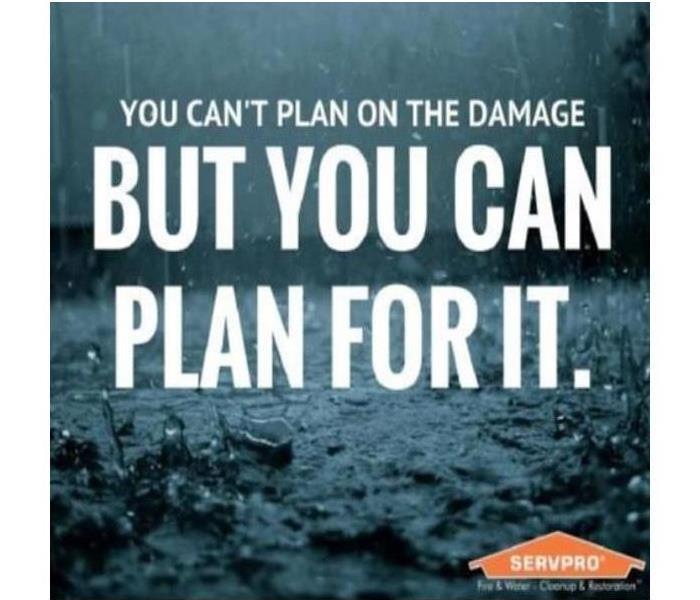 We are Here to Help Make damage caused by a storm "Like it never even happened"!
We are Here to Help Make damage caused by a storm "Like it never even happened"!
Weather-related damages that a McAllen home might suffer range from slight warping of framed screens or missing shingles on a roof to massive flooding throughout the entire home. Various events can cause flooding in our area, but we help many homeowners when they encounter such disastrous circumstances.
Valley homes can suffer flood damage whenever nearby bodies of water overflow.
SERVPRO can help your family, and your home, after any type of flooding event. Flood damage requires a proper and prompt response to prevent the spread of destruction and disease. Our employees receive extensive training that results in the attainment of IICRC certificates in Water Damage Restoration (WRT) and Applied Microbial Remediation (AMRT). These certificates ensure that our technicians know and understand how a flood can affect your home, and the proper mitigation methods to use to rectify the damage.
No matter where the water came from, we can get it removed and restore your home's dryness once again. Working as a team, we work as quickly as possible to
• clear your home of debris (pathogens to mud, sand, and silt to larger items)
• remove materials that we cannot restore (carpets and warped or buckling materials)
• sanitize your home's surfaces
• combat the development of odors.
We must remove anything that can hold moisture from your home. Moisture allows microbes to flourish, and this can cause severe problems for your family home. Soil and mud, as well as carpeting, padding, drywall, insulation, and other now-saturated materials, can all create the perfect environment for mold, mildew, bacteria and other pathogens. Removing these items removes the water and these microorganisms' chance to thrive. Other items, such as broken shards of glass, twisted metal, and broken boards, can pose safety risks.
After we begin restoring the dryness your home requires, we can concentrate on sanitizing your home. Wiping down surfaces, including walls and shelves and removing caked and dried on mud around door frames makes your home ready for your return. Deodorizing the living area, so you do not experience the dank smell that many floods leave behind helps your family quickly recover from the flooding event and move forward. Our goal is to help make everything “Like it never even happened.”
SERVPRO of McAllen has the dedicated professionals who can restore your home after any degree of flood damage. SERVPRO is always available to answer your call at our local number. Contact us, 24/7, 365 days a year, at (956) 631-0348, for our 24-hour, round-the-clock services.
Follow us:
https://www.facebook.com/SERVPROmcallen/
How Applied Structural Drying Can Help to Heal Storm Damage in RGV Properties
1/3/2020 (Permalink)
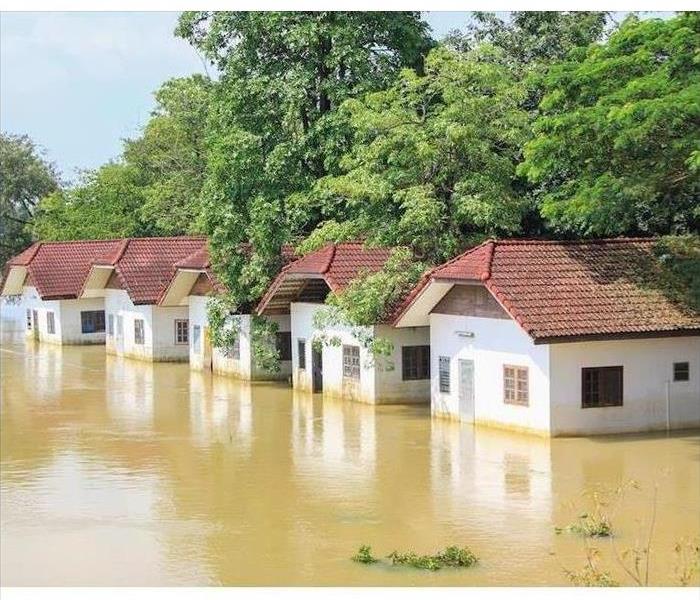 Drying is Key after Flooding. Call SERVPRO of McAllen Quickly to Help avoid secondary damages.
Drying is Key after Flooding. Call SERVPRO of McAllen Quickly to Help avoid secondary damages.
Perla Chapa ~ Marketing Support Coordinator.
Complete Drying can Help to Prevent Secondary Damage
The term Applied Structural Drying refers to one of the most sophisticated methods used by modern water damage restorers. It provides a non-evasive form of drying after structural components in a home have been compromised by flooding.
A series of highly specialized tools are used, in a sequential manner, to extract the moisture from materials like drywall and return them back to their original condition. A.S.D (Applied Structural Cleaning) is critical because it allows homeowners to recover from storm damage in R.G.V properties and keep the cost of water damage low by salvaging as much as possible.
This guide to the four key stages of Applied Structural Drying will explain why it is a powerful weapon in the fight against storm damage.
Extraction
The first stage of A.S.D is always straightforward and complete extraction. If you choose to work with the experts at SERVPRO, you’ll benefit from a fast and speedy response. We understand that the longer standing water remains, the more destructive it gets. So, our technicians will start packing up pumps and heading out to your location as soon as we’ve taken your call. The pumps are powerful and can remove liquid at a surprisingly rapid rate.
Evaporation by Airflow
The next stage is to bring in industrial air movers and high powered fans. These machines are placed around the damp area and circulate clean, dry air throughout the space. In some cases, the carpet is lifted, in order to dry out sub flooring materials.
Evaporation by Dehumidifiers
Any vapor or moisture in the air is then captured with the use of dehumidifying devices. These machines circulate the heavy, wet air and direct it over specific ‘collection’ components. The water molecules are either cooled until they become liquid again (and can be contained) or they are passed into a silica gel desiccant.
Temperature Regulation
This final stage doesn’t actually represent the end of the A.S.D process. It occurs throughout. The SERVPRO technicians must work hard to maintain an optimal temperature in the rooms where the dehumidifiers and air movers are placed. Some machines operate most efficiently under certain conditions and they are sustained while drying is being carried out. A portion of your home may need to be sectioned off and contained in order to achieve this.
If you would like to learn more about the tools and machines used for storm damage restoration, you can easily get in touch with our team. They have spent years dealing with both minor and very severe cases of water damage. SERVPRO of McAllen is based in your area, so we are the best choice for emergency repairs. Call 24/7 at (956) 631-0348.
Tips for Dealing With Storm Damage
9/3/2019 (Permalink)
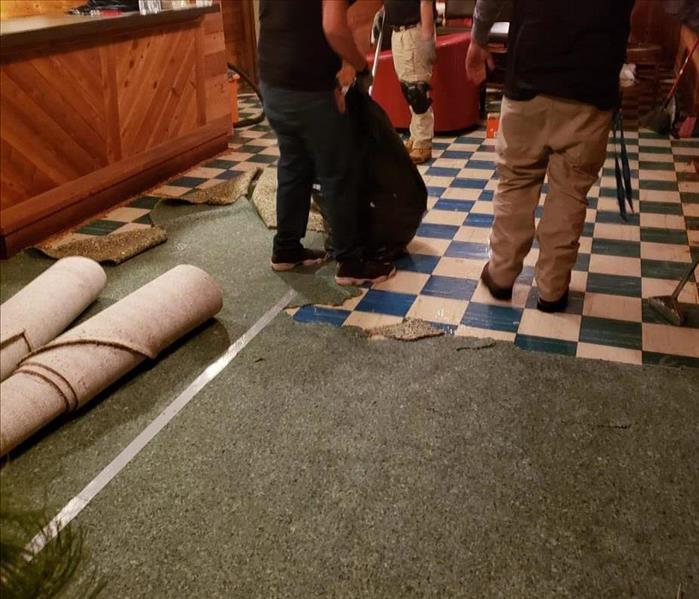 Water From a Storm Came Into Our Customers Home Which Affected Carpet Leaving Them With Standing Water.
Water From a Storm Came Into Our Customers Home Which Affected Carpet Leaving Them With Standing Water.
The most common mistake regarding dealing with storm damage is calling your insurance company first. While you do need to be sure to call them within the window of time they allow for you to file a claim after a storm, There are some things you should do before you call them.
First of all, start with a high-quality, reputable storm damage restoration company. They will often find storm damage that your adjuster would not have noticed, of perhaps even hoped you didn't. By giving the adjuster a full property storm damage inspection report upfront, You avoid missing out on repairs that should have been covered.
It is always best to find your own storm damage restoration company rather than go with one that the insurance company has " approved" because you want one that is working for you rather than the insurance company. You have paid your premiums so you deserve the best repair rather than the cheapest, which is what the insurance company would prefer.
You should also read over your policy before calling the insurance company so you know exactly what they should cover. All too often, homeowners hold back on claims out of fear they will be singled out for a rate increase after a storm damage claim, but this is not the case.
If you have suffered storm damage, Give us a call at SERVPRO of McAllen, we represent your best interest, yet can work directly with the insurance company for claims up to 500,000 to make the process easier for you. We can provide you with an inspection and then complete the restoration for you. Our team has years of experience in restoration, so we are confident we can restore your home to your complete satisfaction.
What to do to protect your home from storm damage
9/3/2019 (Permalink)
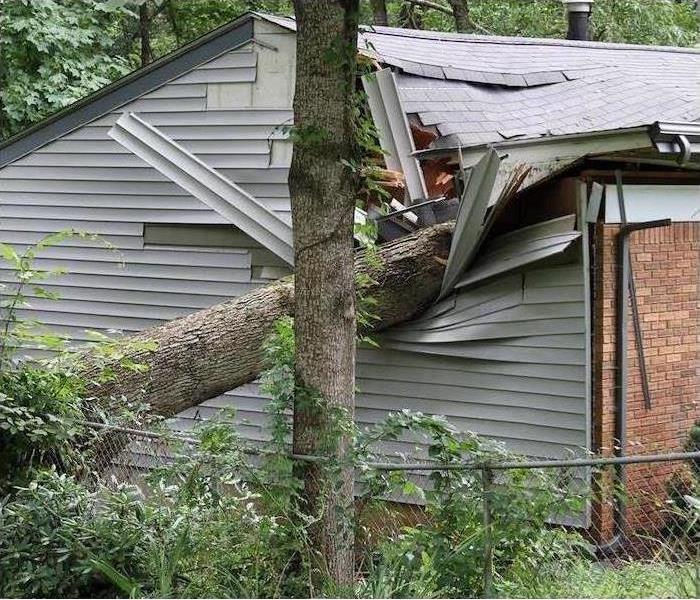 Call SERVPRO of McAllen for any storm damage repair.
Call SERVPRO of McAllen for any storm damage repair.
Harsh weather can cause unexpected problems & damage to your home when you least expect it. It may seem like there's little you can do to protect your home from huge storms with lots of rain, snow, or strong winds, but often, a small amount of effort & upkeep on your home can make a big difference during a storm. The main thing to keep in mind when preparing your home to resist major storm damage is making sure loose spots or small area's that are already damaged make it much easier for strong winds and other elements of a storm to create further damage from a weak spot on your home. This doesn't necessarily mean the entire roof of siding on your home needs to be replaced, nut small repairs now can help prevent further storm damage.
Another way from keeping your home safe from any storm damage is by making sure there isn't any opening or ways that water can get into your home. Keeping gutters and other drains clear is critical for the free movement of water. If the water is being taken away from the sides, windows, and doors from your home, you are much less likely to experience flooding and other water damage . In addition, Proper sealing around doors or windows is key to keeping rain, snow, and hail outside of your home. Any small opening or crack also provides a way for wind to get in and possibly damage windows and doors.
Taking these small steps before a storm hits can help save your home from expensive destructive storm damage and repairs afterwards.
Steps to Take Immediately After a Storm Damage
5/21/2019 (Permalink)
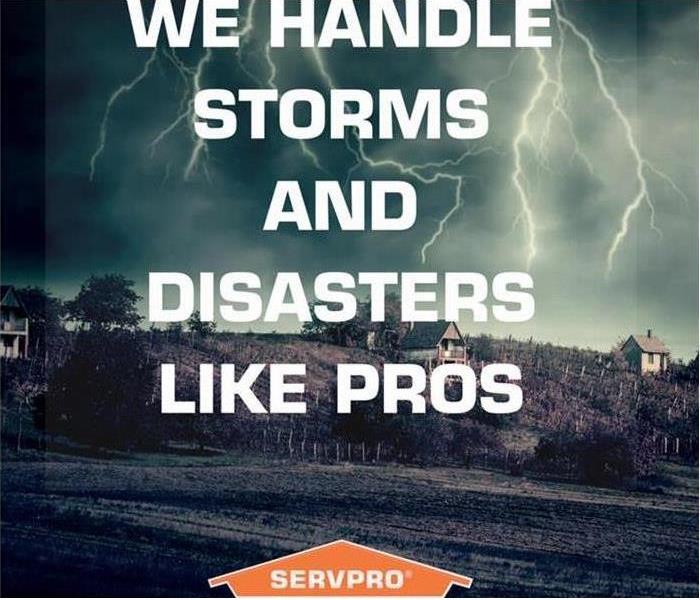 When disaster strikes, we are always here to help.
When disaster strikes, we are always here to help.
Storm damage can occur at any time and can cause an immense amount of harm to your home. Heavy rains can cause flooding and powerful winds can cause roof damage and downed trees on your property. Some post-storm damage can create safety and health hazards as well, so having a strategy to deal with damage will help you to be ready to take steps immediately after the storm.
Take Safety Precautions
Heavy winds and rain can create physical hazards such as collapsed roofing materials, window damage, collapsed walls or standing water in the basement or home interior. In addition, moisture can soak into furniture, carpeting, and building materials making the perfect environment for mold growth that can cause health issues. Shut off the main gas line if you smell gas. Beware of broken glass, exposed nails, and other sharp objects on the property. Contact a reputable property restoration company to help do basic tasks to secure your property and make it safe to use. If necessary, arrange for an alternative place for you and your family to live while your property is being restored to safe living condition.
Photograph the Damage
If it is safe to move around your property, use your cellphone or a camera to photograph the damage so that you will have a record for your insurance company. This action will ensure that you are fully compensated.
Contact Your Insurance Company
Contact your insurance agent to notify them about the damage to your home immediately. The company will send out an adjuster to determine the extent of the damage so that payment for repairs can be made.
Look Into Federal Disaster Assistance
The federal government may have declared the area affected by the storm as a disaster area that is eligible for low-cost loans to help restore your property to normal. You will be required to file documents to receive these loans.
When a storm-related disaster strikes, it may seem overwhelming, but these steps can help you to begin the process of restoring your home, and your life, to normal. At SERVPRO of McAllen, we provide 24-hour emergency disaster service. We specialize in the stabilization and restoration of homes and businesses that have suffered small or large loss from water, flood, wind, storm,fire damage, and smoke disaster.
What to do to protect your home from storm damage
5/20/2019 (Permalink)
 When a storm hits your McAllen home, SERVPRO is here to make it "Like it never even happened."
When a storm hits your McAllen home, SERVPRO is here to make it "Like it never even happened."
Harsh weather and the elements can cause unexpected problems and damage to your home when you least expect it. It may seem like there is little you can do to protect your home from huge storms with lots of rain, snow, or strong winds, but often, a small amount of effort and upkeep on your home can make a big difference during a storm.
The main thing to keep in mind when preparing your home to resist major storm damage is making sure loose or damaged shingles or siding are repaired. Loose spots or small areas that are already damaged make it much easier for strong winds and other elements of a storm to create further damage from a weak spot on your home. This doesn’t necessarily mean the entire roof or siding on your home needs to be replaced, but small repairs now can help prevent further storm damage.
Another important way to keep your home protected from storms is by making sure water can be directed away from your home. Keeping your gutters and other drains clear is critical for the free movement of water. If the water is being taken away from the sides, windows, and doors of your home, you are much less likely to experience flooding and other water damage. In addition, proper sealing around doors or windows is key to keeping rain, snow, and hail outside of your home. Any small opening or crack also provides a way for wind to get in and possibly damage windows and doors.
Taking these small steps before a storm hits can help save your home from expensive, destructive storm damage and repairs afterward. If you have any questions about storm damage and how to prevent or repair it, Call SERVPRO of McAllen.
Remediation After The Storm
1/4/2019 (Permalink)
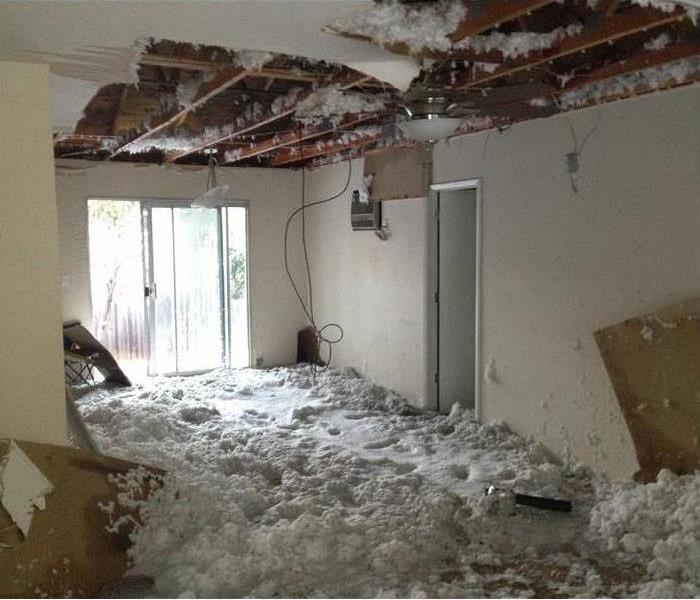 This home was affected by storm damage.
This home was affected by storm damage.
Severe storms, Overflowing rivers, Coastal flooding, Tornadoes, and Hurricanes Sandy, Katrina, Irma, ad nauseum. These days it seems as if the news is always carrying some story or another about our unpredictable weather and its disastrous after-effects. Whether or not climate change is the root cause of all these natural disasters, is debatable. However, what is not debatable are the astonishing costs that these bad weather incidents wreak on the US economy.
Safety First!
Whether the levee breaks or a storm surge inundates our customer’s house or office, flooding can quickly overwhelm the best maintained water purification and sewage disposal systems, which often results in garbage, assorted waste even toxic waste sites, and stored chemicals that end up finding their way onto your client’s property. While it’s true that the majority of most floods do not cause serious outbreaks of infectious disease or chemical poisonings, they can trigger sickness in those who come in contact with contaminated floodwaters probably you and Our workers. For instance, floodwater often contains infectious organisms, including intestinal bacteria such as E. coli, Salmonella, Hepatitis A Virus, and agents of typhoid, paratyphoid and tetanus, so it is very important That you contact SERVPRO Of McAllen Immediately so that service can be started in your home or business as soon as possible.
Before Starting Clean-Up
Here are a few Tips before beginning actual Clean-Up.
- Open all doors and windows when you are working and leave as many open as is safe when you leave.
- Open inside doors, especially closets and interior rooms, to let air flow to all areas. Take doors off their hinges if you need to.
- Open kitchen cabinets and bathroom vanity doors; remove drawers, wipe them clean, and stack them to dry.
- If, and only if, your electrical is safe to use, use fans and dehumidifiers to remove any moisture.
Once Remediation (clean-Up) Has Begun
Here is where we come to save the day no job is too big or too difficult for us here at SERVPRO, we have seen it all.! Once our SERVPRO employees have begun clean up, The most important thing that we do first for your health and safety is DESINFECT! We gather any important documents that have been affected by the storm damage and get them back into their condition "like it never even happened"! after we have taken out and re boxed all important documents we clean up everything and anything from your home from upholstery to textiles as well! We have a variety of disinfecting sprays and products that are very affective that act as both an insecticide and fungicide. We take time to treat all affected areas because here at SERVPRO of McAllen, your health and well being is important to us.
Recovery After The Storm
1/4/2019 (Permalink)
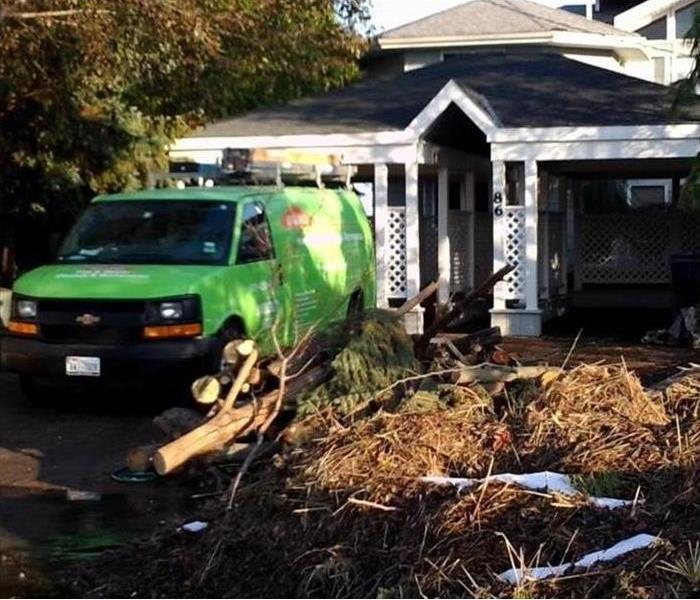 Arriving to a home after storm damage.
Arriving to a home after storm damage.
Being Affected by storm damage can be very devastating and cause you a lot of stress and worry, But what if I were to tell you that relying on an emergency and disaster response team can save you the hassle of finding equipment and a support services?
If you have been affected by storm damage, then you might want to consider SERVPRO of McAllen. We have a 24-hour emergency service that specializes in Clean-Up, Restoration, and remediation as well.
Today, I'd like to cover the following applications available for cleaning up after a storm:
- Emergency Dewatering
- Remediation and Restoration
Emergency Dewatering:
When a hurricane hits or any other storm that can cause some water damage to occur, water can seem endless. SERVPRO of McAllen has High Performance pump products and pump accessories that can help de-water your site. SERVPRO can help you identify the correct equipment, design plan, and maintenance options for all emergency pumping needs That we provide to help make that stress go away.
Remediation and Restoration.
After being hit with a storm, it’s critical to get your home, facility, and/or community building back to its entirety as soon as possible. The equipment SERVPRO most often uses in an emergency includes: generators, pumps, aerial work platforms, vacuums, air scrubbers, and dehumidifiers. Our staff is highly trained and ready for any remediation and restoration service situation.
Hurricane Safety Tips
9/5/2018 (Permalink)
Hurricanes are powerful storms that can cause considerable damage to homes, buildings, and even entire communities and for those living in the Southern and Eastern U.S., there is a consistent threat of a hurricane for much of the year. Hurricane season lasts from the earliest days of spring to late in the fall and it is very important for those that live in hurricane prone areas to always be ready for the possibility of a storm. This includes preparing your home just before hurricane season, and knowing what to do before, after, and during a hurricane to keep yourself and your family safe. Below are some important hurricane safety tips that can protect you, your family, and your property throughout the hurricane season.
Early Preparation and Supplies
Hurricane safety should be taken seriously from the very beginning of hurricane season to ensure that your family and property are prepared. It is important to know the evacuation routes in your area in case you have to evacuate, especially if your home is near the coast. You should also have your home inspected to ensure that it is up to code to handle the strong winds of a hurricane. Perhaps the most important preparation for hurricane season is putting together a supply kit so you and your family have everything you need to make it through the storm. A hurricane supply kit should include the following:
1.-Non-perishable foods such as soups, cereal, and dry goods as well as a can opener
2.-Blankets, pillows, and sleeping bags
3.-Flashlight and batteries
4.-Gallons of water
5.-Toiletries such as toilet paper, toothbrushes, shampoo, etc.
6.-Family prescriptions and first-aid kits
7.-Important documents such as birth certificates, credit cards, social security cards, etc.
8.-Tools
Hurricane Watch Or Warning
When a hurricane watch or warning is issued in your area, you must immediately go on alert. At this stage, you should make sure your supply kit is in order and take steps to board up your home while you still have time. You and your family should also be ready to evacuate along the planned evacuation route if residents in your area are advised to do so. You can effectively board up and prepare your home with the following steps:
1.-Turn off the water, electricity, and gas
2.-Lock all windows and doors
3.-Draw drapes and close blinds
4.-Secure loose, outside objects such as furniture, lawn decorations, potted plants, etc.
5.-Board up your windows with plywood boards that are ¾ inch thick or thicker
6.-Secure your doors with head and foot bolts and use straps or clips to contain your walls and roof.
Impending Storm
If a hurricane has become imminent in your area, your home should be boarded up and your supplies should be available in case you need them. You should also pay attention to local weather reports to stay updated on the progress of the storm. It is best for your family to take shelter in the most secure area of your home as it might be too late by this point to safely evacuate. If you are forced to evacuate before the storm hits, make sure you follow these steps:
1.-Leave as soon as possible to avoid traveling when the storm hits. Keep in mind that many others in your area may be evacuating at the same time.
2.-Make sure you leave with your entire family and have your hurricane safety kit ready to go.
3.-Take your cell phones to keep in constant contact with your family through the evacuation.
4.-You may need to make special accommodations for your pets because many shelters do not allow animals.
Eye of the Storm
1.-Do not leave the secure room
2.-Avoid going near windows
3.-Get weather updates from the radio, TV, or internet
4.-Have your supplies ready for use
5.-Do not be fooled by the eye of the storm, stay in your home as the storm will continue.
Aftermath and Returning Home
If you spent the storm taking shelter in your home, you should remain inside until the hurricane has passed completely. If your family was forced to evacuate, make sure the municipal government has deemed it safe to return as floods, mud slides, downed power lines, property damage, and other resulting disasters can continue to make the area dangerous after the storm. It is just as important to exercise safety precautions in the aftermath of a hurricane as it is during the storm and it may take a while for your home or area to return to normal. In the meantime, try to stay safe in your home and use your emergency supplies if necessary.
Hurricanes vary widely in strength and have the potential to cause all types of problems from damage to your home to widespread flooding and destruction that can disrupt entire communities. Following these safety tips will help you keep your family and your property safe in the event of a hurricane. If you experience significant property damage as the result of a hurricane, make sure you call SERVPRO immediately to help repair the damage. We professionals., will stabilize your home or building to prevent further damage and repair the home quickly so you can resume your normal life.
Inspecting Your Property For Storm Damage
9/3/2018 (Permalink)
Lightning and thunder, heavy rains and strong winds, violent hailstorms, and ice storms usually instill fear and awe in the hearts of all who witness their great power and savage beauty. A storm, however, is typically forgotten as soon as it passes away and people give it no second thought, completely unaware that their property might have been damaged during the adverse weather conditions.
Homeowners often fail to inspect their properties after a storm, especially when they have no apparent reason to suspect a problem. Unrecognized storm damage, however, will eventually compromise the integrity of the home.
Property Damage Inspection
Your first step is to check your home and its surroundings for any signs of damage. So, once the storm is over and it is safe for you to go outside, make sure you inspect each and every part of your property for potential problems.
Roof
Checking your roof should be your top priority after a storm. It is the roof of your home that will keep you safe and dry when a storm hits. Quite predictably, it is the roof of your home that is most vulnerable to storm damage. Ensuring the excellent condition of the roof system should be your top priority.
Tree limbs or other large debris on the roof;
Holes in the roof or missing sections of the roof;
Missing shingles;
Bruises or dented asphalt shingles;
Cracked or broken tile, slate, or concrete shingles;
Torn or split seams;
Displaced metal pieces from around the chimney;
Roofing granules in the gutters or downspouts;
Water stains on the ceiling or walls.
Any of these common signs of roof damage indicate potential risk and probable water damage to your home.
Exterior Walls
Storm damage to the siding or stucco is quite difficult to notice, so you should be very careful when inspecting the walls of your home. Possible signs of exterior damage include:
Cracking, chipping or splitting;
Dings or dents in the siding;
Breaks or holes in the stucco;
Torn metal siding or missing sections of the vinyl siding;
Cracked wood finishes;
Stripped paint or discoloration.
Fascia and Soffits
The fascia and soffits are usually made of painted wood or wood wrapped in metal or PVC. When inspecting your property for storm damage, have in mind that both metal and PVC are quite susceptible to dents and cracks. Painted fascia and soffits, on the other hand, can be easily chipped in a storm.
Windows
Cracked or broken windows and damaged window casings are the most commonly experienced types of storm damage. So, after a storm, make sure you check your home for:
Make sure you fix any problems as soon after a storm as possible.
Broken windows may present greater hazards than cutting yourself on the shards of glass.
Shattered windows or broken panes;
Fogging between the panes of thermal windows;
Dents and cracks in the window frames;
Holes and tears in the screening.
Good to remember:
1) Watch out for shards of glass;
2) Immediately board up any shattered windows.
To prevent serious problems in the future, you are recommended to install protective storm shutters and ensure that all the windows in your home are properly caulked and counter-flashed.
Entry Doors
After a storm, you may notice dents and/or discoloration on the metal or wood door panels and damage to the trim around the door frame.
Crawl Spaces
Check for water getting into the crawl spaces of your home. If you find any, remove it quickly with the help of a sump pump or underground drainage system (otherwise it may result in mold growth and water damage to your property).
Gutters and Downspouts
Metal gutters will dent and PVC gutters can crack when hit by hail or high winds. Detached or broken trims, gutters and downspouts are also commonly seen after a storm.
Driveways and Walkways
Severe storms can cause concrete and other walkway materials to chip, crack and split. This type of damage can pose considerable safety hazards, so you should take immediate measures to fix your driveway (as well as the walkways around your home).
Decks, Railings and Fences
Wooden decks, railings and fences can be splintered or broken by hail or flying debris during a storm. The paint may get stripped or chipped, exposing the wood and reducing the lifespan of the deck or fence. To protect your investment and preserve the value of your property, you need to promptly identify and repair even such seemingly minor storm damage.
Lightning Safety Awareness
5/18/2018 (Permalink)
This blog is to raise awareness about the dangers of lightning and what individuals can do to stay safe.
The dangers of lightning are often not taken seriously. Just behind tornadoes and flooding in number of lives claimed annually, lightning is the #3 storm-related hazard, causing 51 deaths each year nationwide. Shockingly, there are an estimated 25 million cloud-to-ground lightning strikes in the US each year, with an addition 500+ injuries reported annually. But since lightning doesn’t tend to cause mass destruction all at once like a tornado would, and only 0.002% of lightning strikes actually hit people directly, its danger is often unappreciated. But that doesn’t mean that lightning safety should not be taken seriously.
According to the NWS, if you can hear thunder, then you are close enough to be struck by lightning since lightning can, and occasionally does, strike away from the storm. The safest place to be during a lightning storm is indoors. There are no safe spots outdoors. Your best bet when outdoors if you can’t get inside is to get into a vehicle and close the windows.
If a person is struck by lightning, call 911 and get medical care immediately. Cardiac arrest and irregularities, burns, and nerve damage are common in cases where people are struck by lightning. However, with proper treatment, including CPR if necessary, most victims survive a lightning strike, although they may be left with serious and lasting effects. You are in no added danger when helping a lightning victim, and you may safely do so immediately. Lightning victims do not carry a charge.
How Powerful is Lightning?
A typical lightning flash is about 300 million Volts and about 30,000 Amps. In comparison, household current is 120 Volts and 15 Amps. There is enough energy in a typical flash of lightning to light a 100-watt incandescent light bulb for about three months or the equivalent compact fluorescent bulb for about a year.
How Hot is Lightning?
Technically, lightning is the movement of electrical charges and doesn’t have a temperature; however, resistance to the movement of these electrical charges causes the materials that the lightning is passing through to heat up.
If an object is a good conductor of electricity, it won’t heat up as much as a poor conductor. Air is a very poor conductor of electricity and gets extremely hot when lightning passes through it. In fact, lightning can heat the air it passes through to 50,000 degrees Fahrenheit (5 times hotter than the surface of the sun).
When lightning strikes a tree, the heat vaporizes any water in its path possibly causing the tree to explode or a strip of bark to be blown off.
Myths & Facts
Myth: Lightning never strikes the same place twice.
Fact: Lightning often strikes the same place repeatedly, especially if it’s a tall, pointy, isolated object. The Empire State Building is hit nearly 100 times a year.
Myth: If it’s not raining or there aren’t clouds overhead, you’re safe from lightning.
Fact: Lightning often strikes more than three miles from the center of the thunderstorm, far outside the rain or thunderstorm cloud. “Bolts from the blue” can strike 10-15 miles from the thunderstorm.
Myth: Rubber tires on a car protect you from lightning by insulating you from the ground.
Fact: Most cars are safe from lightning, but it is the metal roof and metal sides that protect you, NOT the rubber tires. Remember, convertibles, motorcycles, bicycles, open-shelled outdoor recreational vehicles and cars with fiberglass shells offer no protection from lightning. When lightning strikes a vehicle, it goes through the metal frame into the ground. Don’t lean on doors during a thunderstorm.
Myth: A lightning victim is electrified. If you touch them, you’ll be electrocuted.
Fact: The human body does not store electricity. It is perfectly safe to touch a lightning victim to give them first aid. This is the most chilling of lightning Myths. Imagine if someone died because people were afraid to give CPR!
Myth: If outside in a thunderstorm, you should seek shelter under a tree to stay dry.
Fact: Being underneath a tree is the second leading cause of lightning casualties. Better to get wet than fried!
Myth: If you are in a house, you are 100% safe from lightning.
Fact: A house is a safe place to be during a thunderstorm as long as you avoid anything that conducts electricity. This means staying off corded phones, electrical appliances, wires, TV cables, computers, plumbing, metal doors and windows. Windows are hazardous for two reasons: wind generated during a thunderstorm can blow objects into the window, breaking it and causing glass to shatter and second, in older homes, in rare instances, lightning can come in cracks in the sides of windows.
Myth: If thunderstorms threaten while you are outside playing a game, it is okay to finish it before seeking shelter.
Fact: Many lightning casualties occur because people do not seek shelter soon enough. No game is worth death or life-long injuries. Seek proper shelter immediately if you hear thunder. Adults are responsible for the safety of children.
Myth: Structures with metal, or metal on the body (jewelry, cell phones,Mp3 players, watches, etc), attract lightning.
Fact: Height, pointy shape, and isolation are the dominant factors controlling where a lightning bolt will strike. The presence of metal makes absolutely no difference on where lightning strikes. Mountains are made of stone but get struck by lightning many times a year. When lightning threatens, take proper protective action immediately by seeking a safe shelter – don’t waste time removing metal. While metal does not attract lightning, it does conduct it so stay away from metal fences, railing, bleachers, etc.
Myth: If trapped outside and lightning is about to strike, I should lie flat on the ground.
Fact: Lying flat increases your chance of being affected by potentially deadly ground current. If you are caught outside in a thunderstorm, you keep moving toward a safe shelter.
What is Heat Lightning?
The term “heat lightning” is commonly used to describe lightning from a distant thunderstorm just too far away to see the actual cloud-to-ground flash or to hear the accompanying thunder.
While many people incorrectly think that heat lightning is a specific type of lightning, it is simply the light produced by a distant thunderstorm.
Often, mountains, hills, trees or just the curvature of the earth prevent the observer from seeing the actual lightning flash. Instead, the faint flash seen by the observer is light being reflected off higher-level clouds. Also, the sound of thunder can only be heard for about 10 miles from a flash.
Conclusion
Although lightning storms don’t tend to spark the same panic as tornado warnings, it’s still a storm hazard that needs to be taken seriously and should be a part of your storm safety preparation. Take this Lightning Safety Awareness Week as an opportunity to learn about the threat of Lightning and how you can prepare yourself and your home when a storm comes through.
Flood Safety & Severe Weather Preparedness
5/10/2018 (Permalink)
Being in an industry that often deals with property damage as a result of severe weather and flooding, we wanted to take a moment to write about the topic and share some ways that you can prepare for severe weather. And while severe weather can occur any day of the year, we often see a spike in thunderstorms, tornadoes and flooding in the Spring.
Lightning
Lightning is unpredictable and dangerous.
While lightning fatalities have decreased over the past 30 years, it is still one of the top three storm-related killers in the United States.
Outdoors
*Most lightning deaths and injuries occur when people are caught outdoors.
*At the first sign of lightning or thunder, seek shelter.
*Do not resume outdoor activities for at least 30 minutes after last observed lightning or thunder.
*Avoid the following areas: water, high ground, large open areas, isolated trees, and all metal objects or electrical wires.
If Someone is Struck by Lightning
*Have someone dial 9-1-1 immediately.
*People struck by lightning carry NO electrical charge and can be safely attended to immediately.
*Give first aid. If breathing has stopped, begin rescue breathing. If the heart has stopped beating, a trained person should give CPR. If the person has a pulse and is breathing, look and care for other possible injuries.
*Stay with the victim until medical professionals arrive.
Thunderstorms
During a Thunderstorm
*If a thunderstorm is coming postpone or cancel outdoor activity.
*Do NOT go near tall trees or any other tall objects.
*Seek shelter inside a building or in a hardtop vehicle, but don’t touch any of the metal inside.
*Do NOT use the telephone. Stay away from other electronic devices, bare metal, and water.
*Do NOT go near downed power lines.
*Keep your eye on the sky and listen to weather reports on the radio or TV.
*If caught out in the middle of a large body of water, return to shore as soon as possible. Get off the water immediately.
*When caught in the middle of an open field: If walking with others stay a minimum of 10 feet apart, keep low and move quickly to seek shelter. If there is no shelter lay in a ditch or get to the lowest place around.
Tornadoes
Tornadoes are violent rotating cylinders of air that can reach speeds in excess of 300 mph, be more than a mile wide, and cover up to around 50 miles during their short path of destruction. Tornadoes can cause millions of dollars worth of damage and rip buildings off their foundations leaving only debris in their wake. They can appear suddenly and with little warning.
Tornado Watch: Conditions are right to have a tornado. Maintain a close look out for changes in the sky and stay tuned to local weather stations.
Tornado Warning: This means there is an actual tornado reported or radar indicates one could develop within a few minutes. Seek shelter quickly.
During a Tornado:
*Basements, inner rooms of a house, and storm sellars provide the best protection.
*Stay away from exterior walls, windows, and doors. Stay in the center of the room.
*If you are in your car do NOT try and outrun the tornado because it can switch direction and can cover lots of ground quickly.
*Get out of vehicle and go into a strong building if possible. If not, lie flat in a ditch or low area and cover your head.
*Do NOT go under overpasses, wind speeds actually increase under them and can suck you out!
*If you live in a mobile home, get out IMMEDIATELY. Take shelter in a building with a strong foundation.
*Listen to radio or watch TV so you can be alerted about your current situation.
Flooding
Flooding is the most common natural disaster in the United States. Floods can develop over the course of a few weeks or happen at a moments notice.
Flood Watches: Conditions to have a flood in your area are favorable.
Flood Warnings: A flood is occurring or is very likely to occur very soon.
During a Flood
*Get to higher ground.
*Evacuate your house if flooding is possible.
*Know your town and make sure you know alternate escape routes in case one is blocked.
*Take pets with you if you evacuate. However, many shelters usually do NOT allow pets inside due to sanitary conditions so plan accordingly.
*Do NOT try and drive through water. As little as 2 feet can cause most cars to float, and as little as a few inches of moving water can wash most cars away with the current.
*Do NOT try to cross moving water on foot. As little as a few inches can knock you off your feet.
*Watch TV or listen to the radio to find out what actions to take next.
Preparing for A Flood
*According to the Federal Emergency Management Agency, floods are the most common natural disaster in the United States. In the past several years, about 60 percent of all declared disasters involved flooding.
*Develop a family emergency plan and put together a disaster preparedness kit
*Safeguard your possessions
*Create a personal flood file containing information about all your possessions and keep it in a secure place, such as a safe deposit box or waterproof container. This file should have:
*A copy of your insurance policies with your agent’s contact information
*A household inventory that includes written and visual documentation of all household items and valuables.
*Copies of all other important documents
Prepare your house
*If you have a sump pump, make sure it is working and has a battery operated backup system.
*Clean debris from gutters and downspouts
*Raise electrical components at least 12 inches from your home’s projected flood elevation
Get Prepared
People often think, “It will never happen to me.” And hopefully you are right. But the fact of the matter is that tornadoes, lightning, and floods are not too uncommon, especially during this time of year. You should always expect the unexpected.
What should I do after a hurricane?
10/30/2017 (Permalink)
The days and weeks after a hurricane damages your home and neighborhood are incredibly difficult, both from an emotional standpoint as well as a physical one. There can be so many emotions running through a person’s mind in those days that many victims often feel paralyzed about what to do next. SERVPRO of McAllen knows all too well the difficulties that come with these kind of natural disasters. Our country was just hit with 2 of the most devastating hurricanes we’ve ever seen, and for them to happen within a couple of weeks is unprecedented. But as regional and national resources are put in place to begin the rebuild process, it’s important for you as a homeowner to understand there are things you can do to begin the difficult task of getting your property and your life back to normal.
When should I return home?
Often times returning home is dictated by local government agencies. In many instances, there are immediate health threats that make it incredibly unsafe to return home. Whether it’s downed power lines, or the presence of flood waters that are highly contaminated, in many disaster areas it’s simply not feasible to have people wandering around in. It’s always advised that you check your local government’s web site in order to receive up to date information regarding the cleanup efforts along with recommendations regarding your return.
Will my home’s damage be covered by insurance?
This is the most common question homeowners typically have when they return to survey the damage to their home. If the damage is severe, it’s clear it’s going to cost a lot of money to get the property back to its previous condition. We can’t offer a blanket yes or no answer to this question, because every insurer’s policy is different and every homeowners’ situation is different. But what we can do is outline some of the factors that may help you get to an answer more easily. That said, we always recommend you immediately reach out to your insurer to speak with them about your house damage directly.
Do you have flood insurance?
If you live in an area that is prone to flooding and you took out a mortgage for your home, you’ll often be required to carry flood insurance. In the event you do have this additional coverage, you’re most likely covered for the cost of the damages.
Do you have significant wind damage?
In the event you only have homeowners insurance and your house flooded due to a hurricane, you’re most likely not covered for the cost of the flood damage. With that said, you may be covered for other damage the occurred, such as roof damage, broken windows, siding, etc. That said, some insurers do not cover wind damage in area susceptible to hurricanes. So again, you’ll need to check with your insurer to find out what’s covered.
Should I wait to start getting my home fixed?
This is one thing that often trips up homeowners that suffer any type of water damage, whether it’s from a broken pipe or a hurricane. The answer is quite simply ‘no.’ You should never delay the process of cleaning up and restoring your home. That’s especially true when it comes to a natural disaster like a hurricane. Under normal circumstances it might take an adjuster a couple of days to come assess your property. But in the event of a massive natural disaster, insurers become overwhelmed with claims and it often times takes weeks for them to respond. That’s more time for the effects of the flood to cause even more damage to your property.
We always recommend you contact us at www.SERVPROmcallen.com to immediately to begin assessing your options and to begin the cleanup efforts. You’ll end up being able to salvage more of your property and possessions and reduce the cost of the cleanup effort!
How Flood Water Affects Your Health and Safety
10/9/2017 (Permalink)
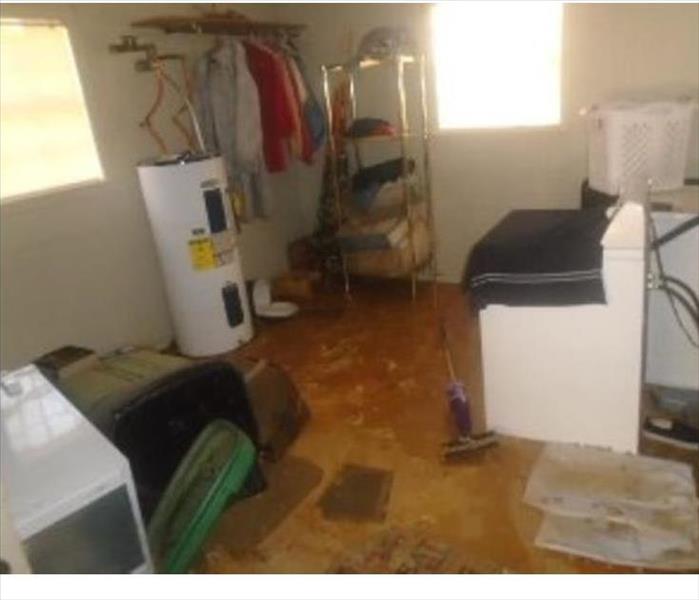 Flood Damage
Flood Damage
While flood waters can certainly destroy a property structure and its contents, they can also be extremely dangerous to your health. There are 3 different categories of flood damage, including fresh water, grey water and sewage water. If any contact is made with the floodwater without proper protection equipment, you will face the risk of severe illness.
In addition, floodwaters can carry sharp objects and chemicals that may not be seen below the surface. But despite these severe threats, it is crucial to be aware so that you and your family or staff can be properly prepared when it does happen. Watch out for these risks as to how flood water can affect your health.
While deeper waters will pose higher threats than those that are a few inches, any amount is dangerous and can cause serious harm to you and your loved ones.
Injury from Sharp Objects
While you may not see sharp objects at first, treading through murky water is extremely dangerous. If your house was flooded, any nails, screws, broken glass, or any other small metal pieces can cause an injury and even infection.
To protect your own safety, wear long clothing and thick shoes if you have to tread through the water. Otherwise, it is better to stay away.
Safety Threats from Structural Damage
Because water is heavy, it can put a ton of pressure on a property structure – especially if it contains porous materials – that makes it weak to collapse at any minute. That’s why it is highly recommended to stay away from homes and buildings with severe structural damage.
Safety Threats from Electrical Damage
Even if you are not in any building, any fallen power lines pose a huge risk of electric shock. While many have been submerged underwater, it will be extremely difficult to see them as the water will be murky.
If you do see any power lines that have fallen into the water, be sure to report them to your local electric company and stay away from them. If for any reason that you have to enter the water, make sure that all power in your area has been shut off.
Open Wounds Allowing for Diseases
If you are treading through water and are cut with any sharp objects, get out immediately. Any open cuts or wounds will be exposed to millions of harmful bacteria in the water, discounting any harsh chemicals that can irritate the injury.
If you have any healing sores or injuries, try to avoid the water, or at least ensure the injuries are properly protected before entering.
Harmful Chemicals and Substances Causing Infection
Even if you don’t have any open wounds, anybody who enters floodwaters are still facing the risk of serious infections and diseases caused by a variety of dangerous substances. These can include any of the following:
Sewage waste
Gas
Oil
Organic waste
Animal feces
Blood
Pathogens
If any of these were to become ingested, it is likely experience a number of negative health effects, such as vomiting, diarrhea, nausea, and gastroenteritis. If you notice any of the substances in the water that are mentioned above, stay as far away as possible.
Emergency Help after Experiencing a Flood
Without a doubt, floods can devastate homes and buildings, but the safety risks they pose to humans can make the situation much worse. Due to the varying amounts of sharp objects, chemicals, bacteria, animals, loose wiring, and insects contained in the flood waters, it is essential to avoid as much contact as possible.
Instead of treading through the water, it is best to wait for a rescue team to come instead. There will also be flood cleanup professionals, SERVPRO of McAllen , We can help repairing and restoring homes and buildings with significant structural damage. Because we understand the feeling of losing a home and belongings, they will work tirelessly to return your property to its original condition. Don’t hesitate to call as soon as you notice the damage.
How To Stay Safe in case of Thunderstorm.
7/3/2017 (Permalink)
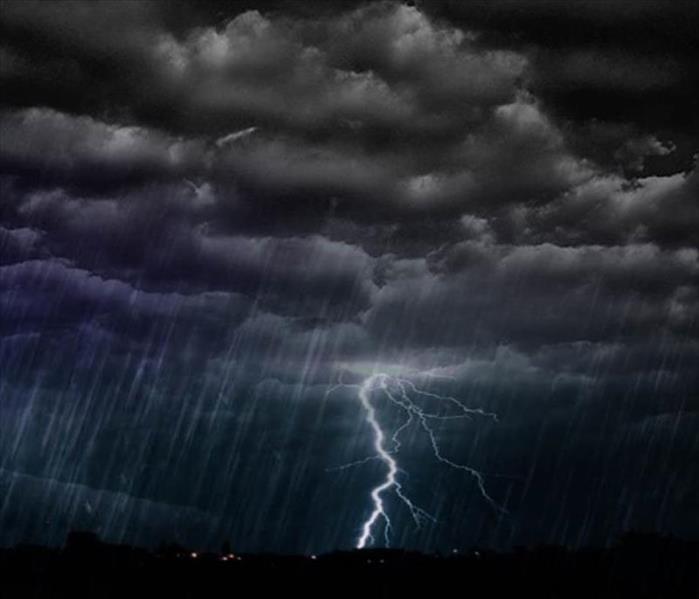 Thunderstorm
Thunderstorm
Each year, the majority of the United States will experience at least one thunderstorm. While they are more prevalent in certain areas than others, due to the differences in the climate and weather conditions, they can also prove to be very dangerous if precautions are not taken.
How to Stay Safe Before the Thunderstorm
- Secure all outdoor belongings to avoid them from blowing around and causing property damage.
- Remove any large debris from the yard, such as large branches, construction and gardening tools, etc.
- Shut all outside windows and doors.
- Unplug all electrical equipment.
- Bring all pets inside.
Staying Safe When Not at Home During the Storm:
- When in the car, close the windows. Do not touch any metal part of the car. Also, do not attempt to drive anywhere safe as flash floods are known for causing severe damage to cars.
- When in an open area, find lower ground as fast as possible that is away from tall objects. Crouch down with your head between your knees while keeping your ears covered.
- If you are in a forest, find an area with smaller trees that are covered by taller ones. If possible, get to lower ground.
- When with a group of people, try to stay at least 15 feet from them at all times.
- Stay away from all metal objects, such as outside equipment, motorcycles, golf carts, bikes, etc.
- Stay out of all areas with water, including the beach, lake, pond, ocean, etc.
How to Stay Safety at Home During the Storm
- Stay away from all windows, doors, porches, and gazebos. Close all blinds and drapes and stay in the center of the home.
- Do not turn on the water or any water-related appliances, such as the sink, washing machine, dishwasher, hose, etc.
- Do not lie or lean against any concrete floors or walls as they may contain wires that conduct electricity.
- Safety After the Storm
- Do not drive through a flooded area.
- Do not drive anywhere with large amounts of debris on the road.
- Help others if they need assistance.
- As pets can be afraid of storms, keep them indoors.
- Report all fallen power lines.
Recovering After The Storm
As you can see, there are many precautions that can be taken to be prepared for and stay safe during a storm. But unfortunately, some storms may be strong enough to still cause damage to a home or building. While strong winds are able to rip off roofs, siding, doors, etc., flash floods are also able to seep into foundations and cause severe water damage.
If you have found significant damage to your property after a thunderstorm, do not hesitate to call SERVPRO of McAllen to help with the water damage restoration or storm damage cleanup services.
Tips To Prepare For Hurricane Season
5/15/2017 (Permalink)
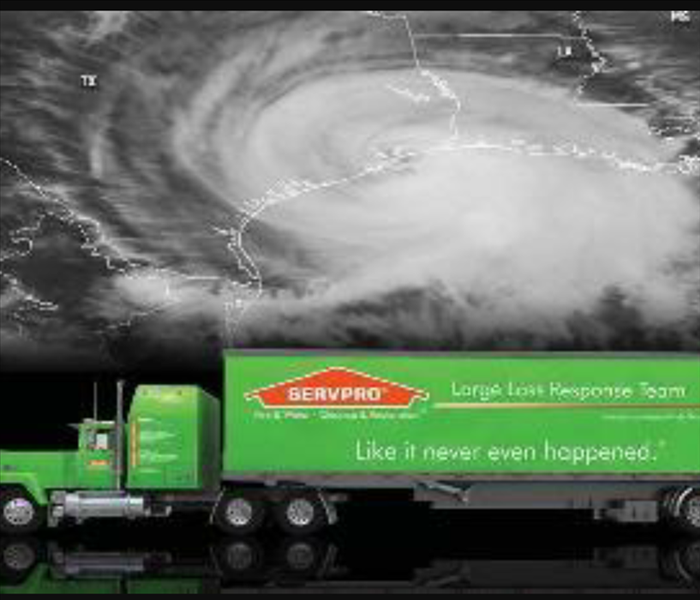 Hurricane season
Hurricane season
Hurricanes are among the most dangerous types of weather conditions and for six months out of the year, the Atlantic and Gulf coasts are prone to these severe storms during what is known as hurricane season. Hurricanes are dangerous because they dump heavy rain in a short period of time and have very powerful winds. The heavy rain can quickly cause severe flooding and the winds are strong enough to damage buildings and knock down large objects like trees and power lines. These storms are responsible for billions of dollars in property damage each year as well as injuries and death. Most deaths that happen in a hurricane are caused by the flooding.
Hurricane season officially begins June 1 and ends on November 30, but a hurricane can strike land any time of year. If you live in a hurricane prone area near the Atlantic Ocean or Gulf of Mexico, it is important to prepare for the possibility of a hurricane. A hurricane can happen at any time and having a plan in place and emergency supplies ready will help you evacuate to safety much quicker. The following hurricane preparedness tips will help you get ready for hurricane season. You must address any damage to your property from a hurricane immediately by calling a storm damage restoration expert.
How To Prepare For A Hurricane
County evacuation map and shelters
Evacuation routes are mapped out in hurricane prone areas.
Review your plan: At the beginning of each hurricane season, review your plan for preparing and reacting to a hurricane and update it if needed.
Review your insurance policy: Check your homeowner’s insurance policy to see if it covers hurricane damage. You may need to purchase separate flood insurance to cover flood damage.
Protect important documents: Put important documents like birth certificates, titles, house deeds, and others in a water proof safe. This safe should be stored on the upper floors of your home for more protection.
Discuss the plan: Share the plan with your family so everyone knows what to do when a hurricane is imminent.
Emergency supply kit: Put together emergency supplies that you will need in case you are trapped in your home without power or forced to evacuate. See the section below for more on what to include in your emergency supply kit.
Evacuation routes: Hurricane prone areas typically have mapped out evacuation routes. Make sure you are familiar with the evacuation route in your area in case a hurricane forces you to evacuate.
If a Hurricane is Imminent
Move objects like furniture away from doors and windows.
Unplug electronics and small appliances. Be ready to shut off the power in your home if necessary.
Water: You should have one gallon of water per person each day for between 3 and 7 days.
Food: Your food supply should consist of non-perishable items and snack foods as well as paper plates, a can opener, and cooking tools.
Clothing: Pack clothing that can withstand the rainy conditions.
Blankets and pillows: Have enough blankets and pillows for each member of your family.
First Aid Kit: Pack necessary medication and prescription drugs as well as bandages and other supplies to deal with minor injuries.
Toiletries: Include personal hygiene products.
Special items: Make sure to pack any special items needed or young children or the elderly.
Flashlight batteries: Pack a flashlight and extra batteries to keep it working.
Radio: Include a small battery operated radio to listen to weather reports.
Cell phones: Keep your cell phones charged and bring extra batteries and a charger.
Cash and credit cards: You may not be able to visit a bank or ATM if the hurricane has caused significant widespread damage.
Keys: Make sure you have your keys for your car and house.
Toys, book, games: These items will help keep your kids occupied.
Important documents: Insurance records, medical records, bank documents, social security cards, and other important documents should be secured in a waterproof container.
Pet care: If you have pets, you must have supplies for them too. Make sure you have the proper identification documents, food and water for several days, a leash, and cage if necessary.
Tools: Having a simple tool kit handy can be useful.
Gas in vehicles: Make sure your car is filled with gas before a storm so you can evacuate without making any stops.
The effects of a hurricane can be devastating but by following these hurricane safety tips, you can help ensure the safety of you and your family. Hurricane season is quickly approaching so make sure you get yourself prepared for the possibility of a hurricane if you live in a hurricane prone area. While these hurricane preparation tips can help you protect yourself and your family from harm, there is not much you can do to protect your home from damage. If your home sustains damage from a hurricane or flood, you must call SERVPRO for storm damage restoration services immediately. SERVPRO can repair the damage to your home or building and provide restoration for flooding.
Flood Preparedness and Response: Strategies for Families
5/8/2017 (Permalink)
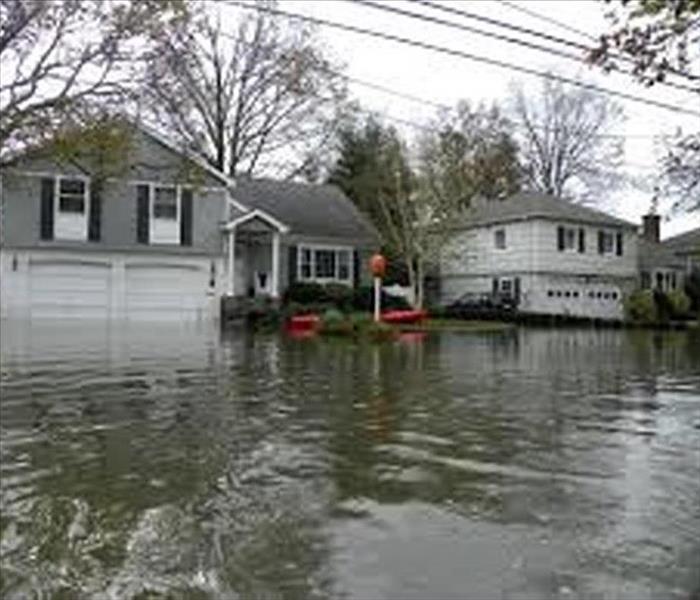 Flood house
Flood house
Floods are an inevitable and natural part of life, especially for those who live along streams and rivers. Counties that border rivers are the most flood prone, but serious floods have occurred throughout the state. It is important to be prepared and know what to do before disaster strikes.
Be Prepared
Find out if you live in a flood-prone area. If you are new to the area, ask your local public works or emergency management office about local flood history. Ask whether your property is above or below the flood stage water level.
If you live in a frequently flooded area, stockpile emergency building materials. These include plywood, plastic sheeting, lumber, nails, hammer, saw, pry bar, shovels and sandbags.
Plan and practice an evacuation route. Contact your local emergency management office or local American Red Cross chapter for a copy of the community flood evacuation plan. This plan should include information on the safest routes to shelters. Individuals living in flash flood areas should have several alternate routes to higher ground.
Have emergency supplies on hand.
- a) Flashlights and extra batteries
- b) Portable battery-operated radio and extra batteries
- c) First-aid kit and manual; essential medicines
- d) Emergency food, water, cooking equipment, can opener
- e) Cash and credit cards
Develop an emergency communication plan. In case family members are separated during a disaster because of work or school, choose a long-distance relative or friend who can serve as the family contact. After a disaster, it is often easier to call long-distance than to place a local call. Make sure everyone in the family knows the name, address and phone number of the contact person. Make sure that all family members know how to respond after a flood or flash flood.
During a Flood
Listen to the radio for further information.
Fill bathtubs, sinks and jugs with clean water in case water becomes contaminated.
Bring outdoor belongings, such as patio furniture, indoors.
Move valuable household possessions to the upper floors or to safe ground if time permits.
If you are instructed by authorities, turn off all utilities at the main power switch and close the main gas valve.
Join with neighbors and volunteers to put sandbags or other protection in place. Stack sandbags away from the outside walls of houses to prevent floodwaters from entering.
Do not attempt to walk through moving floodwaters. If moving fast enough, water one foot deep can sweep you off your feet.
Do not attempt to drive over a flooded road. Turn around and go another way.
During an Evacuation
Listen to the radio or check the Web for evacuation instructions. If advised to evacuate, do so immediately. Evacuation is much simpler and safer before floodwaters become too deep for ordinary vehicles to drive through.
Follow recommended evacuation routes -- shortcuts may be blocked.
After a Flood
Don't return home until authorities have indicated it is safe. When entering buildings, use extreme caution. Potential hazards include:
Gas leaks. Leave your home immediately and call the gas company if you smell the putrid odor of leaking gas. Lanterns, torches, electrical sparks and cigarettes could cause an explosive fire if there is a leak. Do not turn on any light switches.
Electrocution. Wear rubber gloves and rubber-soled shoes to avoid electrocution. Do not turn on any lights or appliances if the house has been flooded. Turn off the electricity when checking electrical circuits and equipment or when checking a flooded basement.
Structural damage. Watch for falling debris and the possibility of collapsing ceilings and basement walls.
Food and water. Do not use water or eat food that has come in contact with floodwaters.






 24/7 Emergency Service
24/7 Emergency Service
